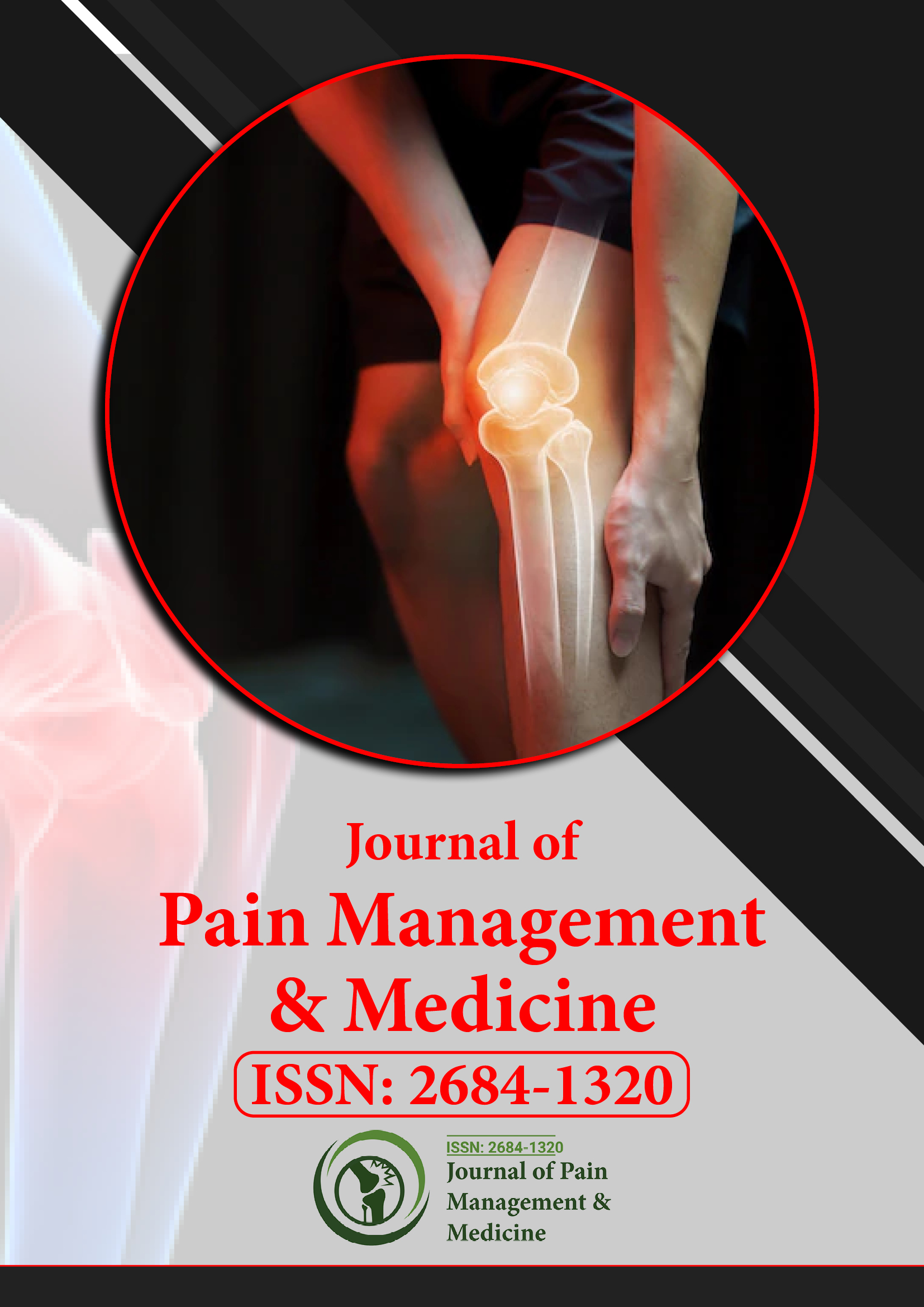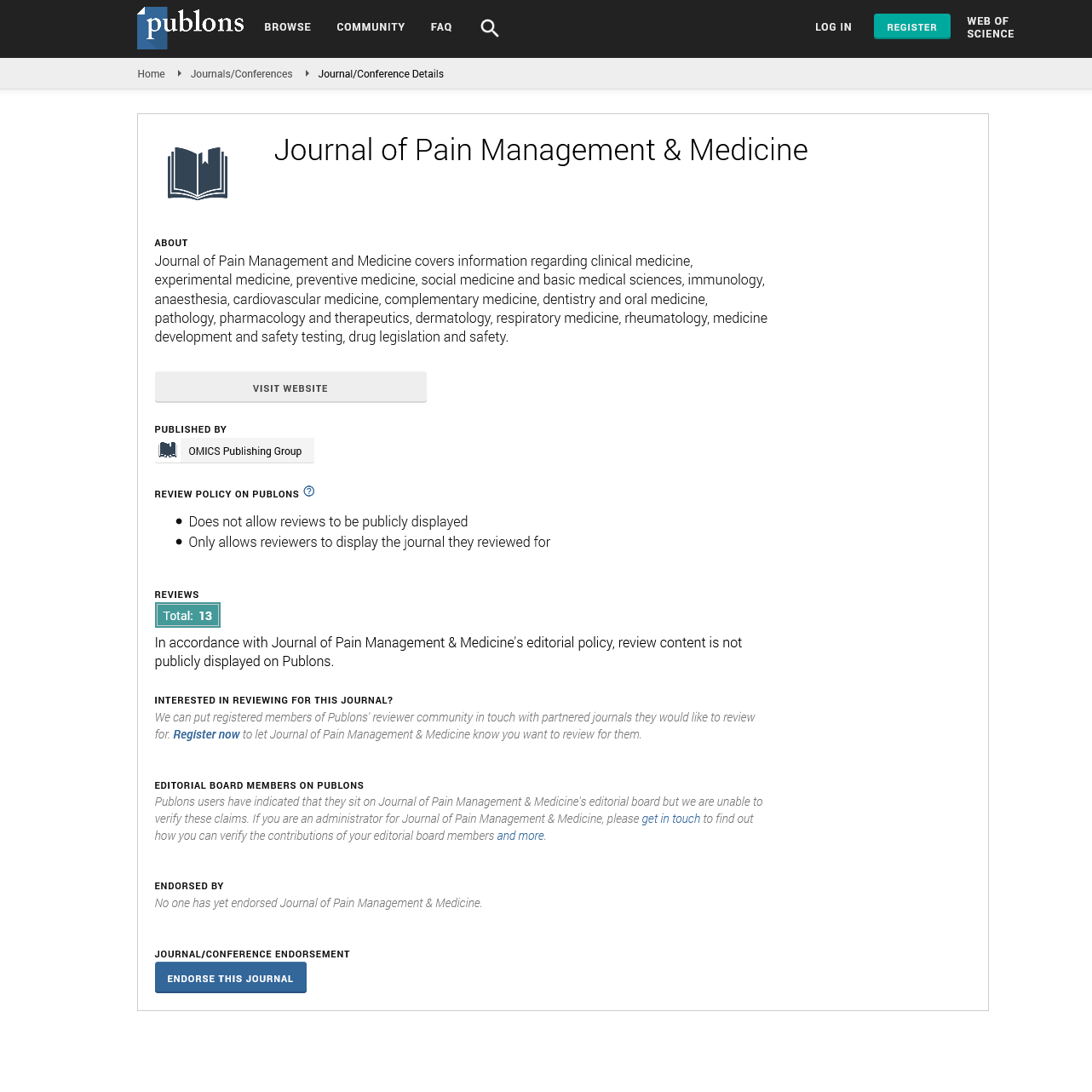Indexed In
- RefSeek
- Hamdard University
- EBSCO A-Z
- Publons
- Euro Pub
- Google Scholar
- Quality Open Access Market
Useful Links
Share This Page
Journal Flyer

Open Access Journals
- Agri and Aquaculture
- Biochemistry
- Bioinformatics & Systems Biology
- Business & Management
- Chemistry
- Clinical Sciences
- Engineering
- Food & Nutrition
- General Science
- Genetics & Molecular Biology
- Immunology & Microbiology
- Medical Sciences
- Neuroscience & Psychology
- Nursing & Health Care
- Pharmaceutical Sciences
Perspective - (2025) Volume 11, Issue 3
The Trigeminal Neuralgia in Clinical Pain Management
Lewis Nelson*Received: 30-Apr-2025, Manuscript No. JPMME-25-29865; Editor assigned: 02-May-2025, Pre QC No. JPMME-25-29865 (PQ); Reviewed: 16-May-2025, QC No. JPMME-25-29865; Revised: 23-May-2025, Manuscript No. JPMME-25-29865 (R); Published: 30-May-2025, DOI: 10.35248/2684-1320.25.11.332
Description
Trigeminal neuralgia is a chronic neuropathic pain disorder characterized by recurrent episodes of severe, stabbing, or shocklike facial pain. Often considered one of the most excruciating pain syndromes, it arises from dysfunction of the trigeminal nerve, which provides sensation to the face. The unpredictable and intense nature of this condition significantly impacts daily activities, psychological well-being, and overall quality of life, making it a critical focus in pain management practice.
The pathophysiology of trigeminal neuralgia is complex and multifactorial. The classical form is often associated with vascular compression of the trigeminal nerve root entry zone, leading to demyelination and abnormal ectopic nerve firing. In secondary forms, underlying conditions such as multiple sclerosis, tumors, or arteriovenous malformations may contribute to nerve dysfunction. Central sensitization within the brainstem and maladaptive neuroplasticity are also believed to play roles in sustaining the pain.
Diagnosis of trigeminal neuralgia is primarily clinical, based on characteristic symptoms and exclusion of other facial pain syndromes. Neuroimaging, particularly Magnetic Resonance Imaging (MRI) with high-resolution sequences, is recommended to rule out secondary causes and to visualize potential vascular compression. Differentiating trigeminal neuralgia from conditions such as atypical facial pain, temporomandibular disorders, or dental pathology is essential for guiding appropriate treatment.
Management strategies for trigeminal neuralgia include pharmacological, interventional, and surgical approaches. First-line therapy typically involves anticonvulsant medications, most notably carbamazepine, which has proven effectiveness in reducing attack frequency and severity. Oxcarbazepine, gabapentin, baclofen, and lamotrigine are alternative or adjunctive agents when carbamazepine is ineffective or poorly tolerated. However, long-term use of these medications may be limited by side effects such as dizziness, sedation, or hematologic abnormalities. For patients with drug-resistant trigeminal neuralgia, interventional and surgical options are considered.
Microvascular Decompression (MVD) remains the most definitive surgical treatment, offering long-term relief by repositioning or padding the compressing vessel away from the trigeminal nerve. While effective, MVD is invasive and carries risks associated with craniotomy. Less invasive procedures, such as percutaneous radiofrequency rhizotomy, glycerol injection, and balloon compression, selectively damage trigeminal nerve fibres to reduce pain. These approaches provide good short-term relief, though recurrence is common over time.
Stereotactic radiosurgery, particularly with the Gamma Knife, has emerged as a non-invasive treatment option. By delivering focused radiation to the trigeminal root, it interrupts abnormal nerve conduction and provides pain relief in many patients. Radiosurgery is especially beneficial for patients who are not surgical candidates due to age or comorbidities.
Pain management for trigeminal neuralgia also involves addressing the psychological and social dimensions of the condition. The unpredictable nature of attacks often leads to anxiety, depression, and social withdrawal. Multidisciplinary care, including psychological support, counselling, and patient education, is vital to improving coping strategies and quality of life.
Recent research into the molecular and cellular mechanisms of neuropathic pain has opened avenues for novel therapies. Experimental treatments such as sodium channel blockers, botulinum toxin injections, and neuromodulation techniques are being investigated for their potential to provide effective, less invasive options for patients with refractory pain.
In conclusion, trigeminal neuralgia is a debilitating facial pain disorder that demands careful diagnosis and comprehensive management. While anticonvulsants remain the cornerstone of treatment, surgical and radiosurgical techniques provide valuable alternatives for refractory cases. A patient-centered, multidisciplinary approach that combines pharmacological, interventional, and supportive strategies ensures the best outcomes. Ongoing research and technological advances hold promise for improving both pain control and quality of life in individuals suffering from this challenging condition.
Citation: Nelson L (2025). The Trigeminal Neuralgia in Clinical Pain Management. J Pain Manage Med. 11:332
Copyright: © 2025 Nelson L. This is an open-access article distributed under the terms of the Creative Commons Attribution License, which permits unrestricted use, distribution, and reproduction in any medium, provided the original author and source are credited.

